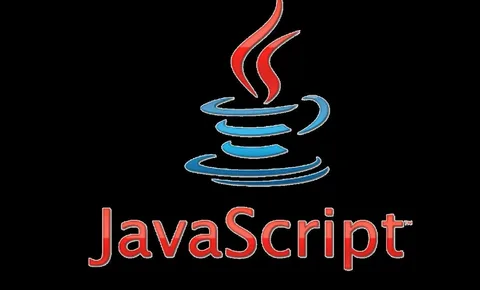
For better engagement, the front-end development of your website should be apt, as the whole representation of your website depends on the front-end development done. To provide the best to the users, developers should keep up with the latest test automation tools and trends that will help them meet the new demands of their clients.
To provide your website with a smooth interface, developers should use automation testing. Automation testing involves executing tests using software tools and comparing the results with what was expected.
This blog will teach you the ten latest front-end development trends, which can help you accelerate your website development cycle.
Table of Contents
Introduction to Front-End Development
Front-end development is the process of developing visual and interactive sections of websites or online applications using various languages like HTML, CSS, and JavaScript. Developers use platforms like React, Angular, and Vue.js to increase efficiency.
Responsive design, a great user experience, and browser compatibility are critical. It is also known as client-side development. More front-end development tools and frameworks are trending, and the development team should consider these trends when building evergreen software applications or websites.
Top Trends in Front-End Development
Amid this continuously evolving website development and automation testing, developers and testers should adapt the latest technologies to keep up with the latest demands of consumers.
Using the latest tools and techniques can efficiently scale up the process. Here are ten tips to help you provide websites with better engagement and user interface.
1. Use of Single Page Application (SPA)
A Single Page Application (SPA) is a web application or website that connects with the user by constantly editing the current page rather than loading complete new pages from the server. SPA is one of the relevant tools among developers due to its ability to provide an easy and responsive user experience, similar to that of a desktop program. Here are some key features of SPAs:
- Single-Page Interface: SPAs consist of a single HTML page constantly updating as the user interacts with the application. There are no full-page reloads during navigation, resulting in an easy and uninterrupted user experience.
- Dynamic Content Loading: SPAs use AJAX (Asynchronous JavaScript and XML) or modern JavaScript programming languages to periodically obtain data from the server. This allows the program to constantly modify specific parts of the page rather than reloading the entire page.
- Routing: SPAs use client-side routing to control navigation within the application. Client-side routers bind URLs to specific views or components of the SPA, allowing users to move between parts or pages without requiring a full page reload.
- State Management: SPAs use data management tools like React’s Context API, Redux, Angular services, or Vuex in Vue.js. These tools contribute to a predictable condition and allow data flow between components.
- Responsive Design: SPAs are designed to work easily across various devices and screen sizes. Responsive design ideas and CSS frameworks such as Bootstrap or Materialize CSS are mostly used to ensure the application responds to several viewport widths.
- Progressive Enhancement: SPAs can use progressive enhancement techniques to ensure that fundamental functionality is available even in contexts where JavaScript is disabled or unsupported.
2. Use of Motion UI
ZURB produced Motion UI, a front-end development tool that adds motion effects to web elements to create visually beautiful and dynamic user interfaces. It is easier to use because it comes with pre-defined CSS classes and Sass mixins to create transitions and animations, including fades, slides, bounces, and flips.
Developers can easily change characteristics such as time and easing functions to meet design specifications. These motion effects dramatically improve the user experience by providing visual feedback, directing attention, and making interactions more intuitive and engaging.
Motion UI follows responsive design guidelines, so animations flow naturally across a variety of screens and devices. It easily combines with well-known JavaScript frameworks, like React, AngularJS, and jQuery, enabling dynamic and interactive features.
Its active community and thorough documentation help developers understand and efficiently apply Motion UI in their applications. Overall, Motion UI enables front-end developers to create visually appealing and user-friendly interfaces that improve usability and provide a remarkable browsing experience.
3. Use of Server-side rendering (SSR)
Server-side rendering (SSR) and static site generation (SSG) assist front-end development by enhancing performance, user experience, and search engine optimization (SEO). SSR sends pre-rendered HTML from the server, which improves initial load times, particularly on slower connections, and SEO by giving easily accessible information to search engine bots.
It also improves performance on low-power devices by minimizing client-side processing. On the other hand, SSR may increase server load and complexity by maintaining server-side and client-side code separately.
SSG, on the other hand, generates static HTML files during the building process, resulting in faster speed and lower hosting costs because static files may be delivered from CDNs. It improves security by preventing server-side code execution.
In front-end development, SSR and SSG are based on project requirements, content dynamics, and scalability requirements. Both approaches help to create speedier, more accessible, and SEO-friendly online applications, giving developers additional options for delivering ideal user experiences.
4. Use of AI in Front-End Development
AI has revolutionized front-end development by bringing new tools that improve user experiences, speed up workflows, and simplify development procedures. Key areas influenced by AI include:
- Automated Code Generation: AI systems interpret design mockups to generate JavaScript, HTML, and CSS code, eliminating the coding.
- Code optimization: AI algorithms examine code to identify inefficiencies and provide improvements to improve code quality and application performance, such as refactoring or compression methods.
- Predictive Design: AI design tools use machine learning to analyze user behavior and provide design recommendations for creating more interactive interfaces.
- NLP algorithms: AI streamlines content creation by analyzing existing data and generating human-like writing, thereby, boosting user engagement and conversions.
- AI accessibility: AI tools ensure web content meets inclusive standards for user experiences.
Generally, AI has improved user experiences, increased design possibilities, automated chores, and improved online application speed, all of which have changed front-end development. Front-end developers are becoming more dependent on AI in developing new modern-day, user-focused web applications. This is leading to the increased relevance of AI tools in both development and automation testing.
5. The use of voice user interfaces (VUIs)
VUIs lets users engage with web applications hands-free with the help of Voice User Interfaces. The use of VUIs is becoming significantly relevant nowadays. To improve accessibility and convenience, front-end developers use speech recognition technologies to comprehend voice instructions. VUIs improve user experiences with natural language comprehension, personalized assistance, and various interaction methods.
They accommodate different user requirements, such as those with disabilities or a preference for voice interactions. Continuous advancements in VUI technology lead front-end developers to enhance speech recognition precision, reduce response times, and enhance overall usability, ensuring smooth integration of voice interactions in web applications for better accessibility and engagement.
6. Use of Jam Stack Architecture
The Jamstack architecture, consisting of JavaScript, APIs, and Markup, is increasingly adopted in front-end development to create quick, secure, and scalable web applications. It involves pre-building the presentation layer using static site generators like Gatsby or Next.js, resulting in optimized static assets served directly from CDNs for improved performance. Client-side JavaScript enhances interactivity, while APIs manage server-side functionality and data retrieval in this decoupled approach.
The Jamstack architecture boosts security by reducing the attack surface. It also enables easy scaling and deployment with globally cached assets for consistent performance. Overall, it offers a modern, efficient approach for front-end developers to build web applications with enhanced performance, scalability, and security.
7. AR & VR in Front-End Development
To provide users with engaging experiences, front-end development increasingly integrates augmented reality (AR) and virtual reality (VR). When users interact with websites in a three-dimensional mode using AR and VR, they feel present and engaged, which improves user satisfaction.
Additionally, these technologies help organizations increase sales and conversions by showcasing goods and services more engagingly and dynamically. They also stimulate UI design and front-end development innovation, opening up new creative possibilities in gaming, storytelling, and education.
8. CSS frameworks in Front – End development
CSS frameworks like Tailwind CSS and Tachyons take a different approach than Bootstrap or Foundation. They use classes directly on HTML elements for styling, promoting modular design, Atomic CSS principles, and rapid prototyping.
- Responsive Design: Utility-first frameworks provide responsive utility classes for creating layouts without media queries, allowing easy style adjustments for different screens and devices.
- Customization: Although these frameworks use utility classes, they offer ample customization options for creating custom themes and extending or adding utilities.
- Performance: Utility-first CSS frameworks often have smaller file sizes than traditional frameworks, resulting in faster page loading and better performance.
- Learning Curve: Utility-first frameworks, though beneficial, may require more effort to learn than traditional frameworks due to their unique approach.
9. Performance Optimization for Websites
Reducing file sizes, caching, and limiting render-blocking resources are all part of front-end development performance optimization. These actions improve websites’ responsiveness and speed. Techniques include caching on browsers and servers, which shortens loading times, while minification, compression, and lazy loading assist in delivering materials more effectively.
Techniques like code splitting and asynchronous loading focus on vital resources, enhancing initial loading speeds. Monitoring tools help measure performance metrics. Moreover, coders and developers can go for automated testing of websites to further ensure that the website functions by integrating various automation testing tools available.
Performance testing, Automation Testing, and Cloud testing are a few ways to achieve a strong website architecture. Cloud testing tools have become trending for checking your website’s cloud architecture and software quality assurance. They also simulate real-time traffic. Cloud testing platforms like LambdaTest are becoming popular since they are less expensive and involve less time.
LambdaTest is an AI-powered test orchestration and execution platform for running manual and automated tests at scale. The platform allows you to perform real-time and automation testing across 3000+ environments and real mobile devices(device farm).
10. The Implementation of Progressive Web Apps (PWAs)
Progressive Web Apps (PWAs) are web applications that run on running web applications and look similar to mobile applications. They have capabilities like push notifications, offline access, and the ability to be shown on smartphones’ home screens to enhance user engagement and performance. Service workers enable offline functionality, allowing low or no connectivity content access.
PWAs are responsive, ensuring smooth experiences across different devices and screen sizes. They focus on performance, reliability, and user experience and bridge the gap between web and native applications for developers looking to deliver robust, cross-platform experiences.
Conclusion
In summary, it is vital to keep up with current front-end development trends, such as automation testing, to provide great user experiences. Automation testing enhances web application reliability, and when coupled with trends like single-page applications and Motion UI, developers can craft responsive and visually pleasing websites.
With the advancements in AI, AR/VR, and Jamstack architecture, front-end development presents limitless opportunities to enhance user satisfaction. Embracing these trends can boost website performance and usability in 2024 and beyond.
RELATED ARTICLES
Latest Articles
 Unlocking Success: Mastering Bank PO Interview PreparationIn EducationApril 24, 2024For banking careers, PO interviews stand as formidable […]
Unlocking Success: Mastering Bank PO Interview PreparationIn EducationApril 24, 2024For banking careers, PO interviews stand as formidable […] The Strategic Value of Purchasing FontsIn TipsApril 18, 2024In today’s visually driven world, fonts are more […]
The Strategic Value of Purchasing FontsIn TipsApril 18, 2024In today’s visually driven world, fonts are more […] Revolutionizing Business: How AI Transforms Customer Experience in the Inflatable IndustryIn BusinessApril 16, 2024Inflatable water slides are the epitome of summer fun, […]
Revolutionizing Business: How AI Transforms Customer Experience in the Inflatable IndustryIn BusinessApril 16, 2024Inflatable water slides are the epitome of summer fun, […] Most Asked Microservice Interview Questions For 2024In TechnologyApril 2, 2024To keep up with changing trends in the tech industry […]
Most Asked Microservice Interview Questions For 2024In TechnologyApril 2, 2024To keep up with changing trends in the tech industry […] Best JavaScript and CSS Library In 2024In TechnologyApril 2, 2024With the ever-expanding functionality of web […]
Best JavaScript and CSS Library In 2024In TechnologyApril 2, 2024With the ever-expanding functionality of web […] Simplifying Mealtime: Meal Prepping for a Family of FourIn UncategorizedMarch 22, 2024In the hustle and bustle of daily life, planning and […]
Simplifying Mealtime: Meal Prepping for a Family of FourIn UncategorizedMarch 22, 2024In the hustle and bustle of daily life, planning and […] How to Freeze Dry Candy With And Without a Machine?In FoodFebruary 27, 2024A candy lover constantly searches for novel and […]
How to Freeze Dry Candy With And Without a Machine?In FoodFebruary 27, 2024A candy lover constantly searches for novel and […] How to Get Something Out Of Your Eye Immediately?In healthFebruary 27, 2024Getting something inside your eyes can be frustrating […]
How to Get Something Out Of Your Eye Immediately?In healthFebruary 27, 2024Getting something inside your eyes can be frustrating […] The Evolution of Remote Control Technology: From RC Cars to DronesIn TechnologyFebruary 22, 2024Remote control technology has come a long way since […]
The Evolution of Remote Control Technology: From RC Cars to DronesIn TechnologyFebruary 22, 2024Remote control technology has come a long way since […] Unveiling the most popular carnival costumes: A colorful parade of creativityIn FashionFebruary 19, 2024In the world of festivities and merrymaking, few […]
Unveiling the most popular carnival costumes: A colorful parade of creativityIn FashionFebruary 19, 2024In the world of festivities and merrymaking, few […] Custom GPTs: The Next AI Opportunity for BusinessesIn Business, TechnologyFebruary 14, 2024The rise of artificial intelligence has transformed […]
Custom GPTs: The Next AI Opportunity for BusinessesIn Business, TechnologyFebruary 14, 2024The rise of artificial intelligence has transformed […] How to Get Rid of a Canker Sore in 24 Hours?In healthFebruary 13, 2024Canker sores are also called aphthous ulcers. They […]
How to Get Rid of a Canker Sore in 24 Hours?In healthFebruary 13, 2024Canker sores are also called aphthous ulcers. They […]
stopie.com is a participant in the Amazon Services LLC Associates Program, an affiliate advertising program designed to provide a means for sites to earn advertising fees by advertising and linking to Amazon.com.
Clicking on an Amazon link from stopie.com does not increase the cost of any item you purchase.
We will only ever link to Amazon products that we think our visitors may be interested in and appreciate learning more about.


